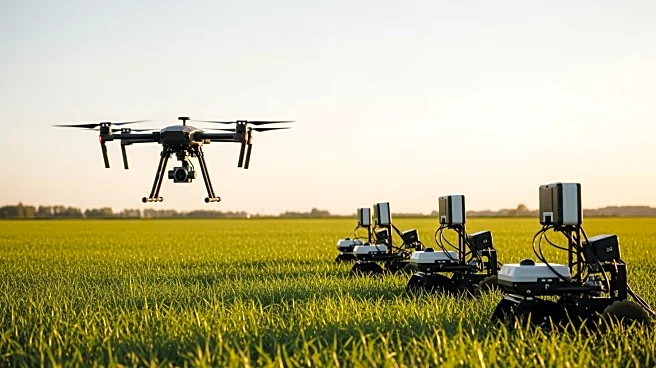What's Happening?
The dairy industry is experiencing a period of low milk futures prices due to increased production and herd expansion. Factors such as efficiency improvements, breeding for beef calves, and technical selling
have contributed to the pressure on product values. Global dairy trade prices have also declined, despite significant investments in dairy processing infrastructure. The industry is facing a potential supply shortage of dairy heifers and cows, which could lead to higher milk prices in the future. Experts predict that milk futures could reach $20 or more by late 2026 and 2027, driven by limited supply and increased demand.
Why It's Important?
The potential rebound in milk prices is significant for dairy producers, who have been facing financial challenges due to low product values. A rise in prices could improve profitability and encourage further investment in the industry. However, producers must remain cautious and adopt strategic marketing approaches to manage price fluctuations effectively. The situation also highlights the interconnectedness of the dairy and beef industries, as high-value beef calves influence dairy herd dynamics. The broader agricultural sector may experience shifts in feed costs and grain production, impacting financial stability for grain producers.
What's Next?
Dairy producers are advised to focus on strategic marketing and cost management to navigate potential price changes. Collaboration with professional advisors can help develop tailored strategies that align with individual operations. The industry must also monitor global trade dynamics and consumer demand, which could influence future price trends. As the market evolves, producers should remain adaptable and informed to capitalize on opportunities and mitigate risks.
Beyond the Headlines
The dairy industry's challenges underscore the importance of balancing production efficiency with market demand. Ethical considerations arise regarding animal welfare and sustainable farming practices, as producers strive to optimize herd management. Long-term shifts in consumer preferences and environmental impacts may also shape the industry's trajectory, necessitating proactive adaptation and innovation.











